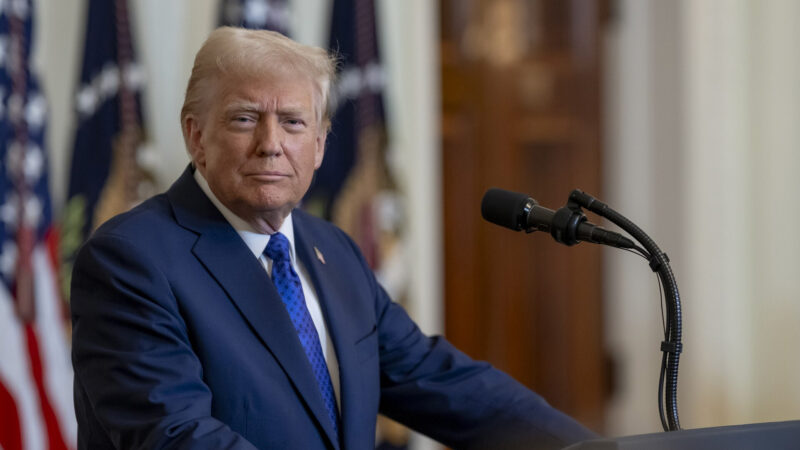Donald Trump loves to act like he’s reshaping the entire federal government with a stroke of his pen and splashy press conferences, but the reality is far less dramatic. Despite his bluster and grandstanding, Trump’s ability to enact deep, transformative changes is heavily constrained—by the Constitution, by Congress, and by the courts.
Trump thrives on spectacle, signing executive orders with a flourish, making big, bombastic declarations, and staging moments designed to dominate the news cycle. But look closer, and you’ll find that many of his so-called “big moves” either fizzle out, face legal setbacks, or end up being empty gestures aimed at rallying his base without delivering real, lasting change.
For example, Trump initially threatened a full-scale trade war with Canada and Mexico. But the markets soon reacted, with the ultra-conservative Wall Street Journal even calling it the “dumbest trade war in history.” He backed down by agreeing to demands Canada and Mexico had largely already agreed to.
In another overhyped move, Trump issued an executive order announcing a halt to all federal loans and grants, claiming he was cutting off “wasteful” spending. But under scrutiny, that plan unraveled. Facing criticism and legal challenges, Trump quietly abandoned the order without much fanfare. The headlines may have focused on the announcement, but the follow-up—when nothing actually changed—barely registered.
Trump also attempted to extend access to the federal payment system to figures like Elon Musk, whose ventures, including cryptocurrencies like DOGE, were poised to benefit from looser financial regulations. But lawsuits and public backlash forced Trump to retreat, and his administration ultimately imposed tighter limits on Musk’s access to federal systems. Again, it was a retreat disguised as action, but the public largely missed the correction.
One of Trump’s most brazen moves—his attempt to end birthright citizenship, a right guaranteed by the 14th Amendment—was swiftly struck down by the courts. A federal judge declared the executive order “blatantly unconstitutional,” and the plan was stopped in its tracks. Trump’s most extreme attacks on civil rights and constitutional protections have met similar fates. Nearly every significant overreach, from attempts to ban entire groups of people from voting to efforts to weaponize federal agencies against political opponents, has been challenged and blocked.
Yet you wouldn’t know it from watching the news. The media, always hungry for drama, tends to amplify Trump’s initial declarations while giving far less attention to the aftermath—when those same declarations get walked back, overturned, or quietly abandoned. The splashy headline announcing Trump’s latest authoritarian move gets top billing, but the follow-up headline—about a judge issuing an injunction or a lawsuit shutting down the policy—gets buried, if it’s even covered at all.
This creates a distorted perception. Trump may not be winning, but he wants you to think he is. By dominating the news cycle with his initial announcements and relying on the public’s short attention span, Trump is able to create the illusion of unstoppable power, even when the reality is far messier and far less effective.
Don’t believe the hype. Trump’s presidency is not the unstoppable juggernaut he wants you to fear. It’s a house of cards propped up by bluster, media manipulation, and a steady stream of half-measures and legal losses. He just wants us to think he’s unstoppable so we don’t fight back.

